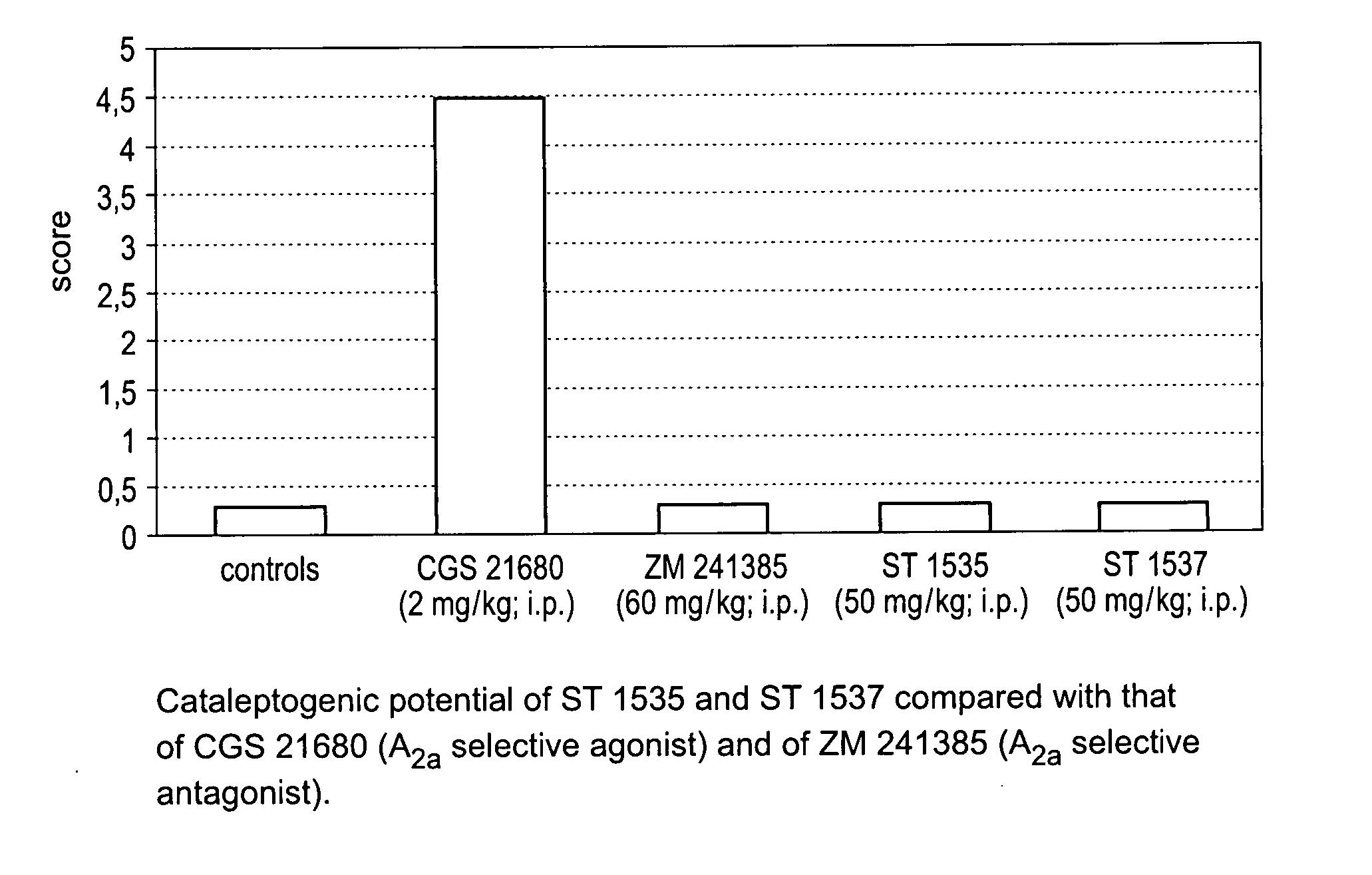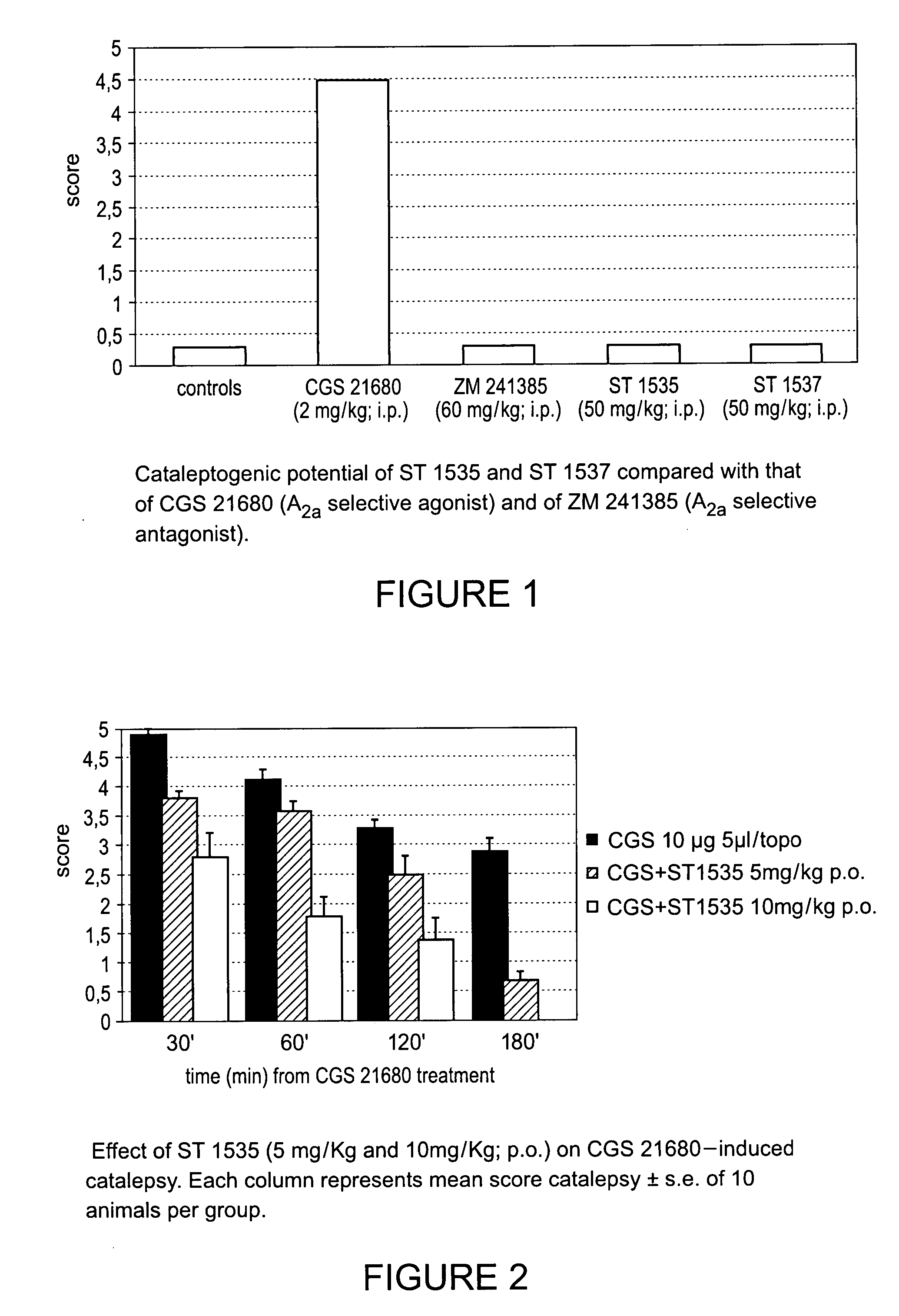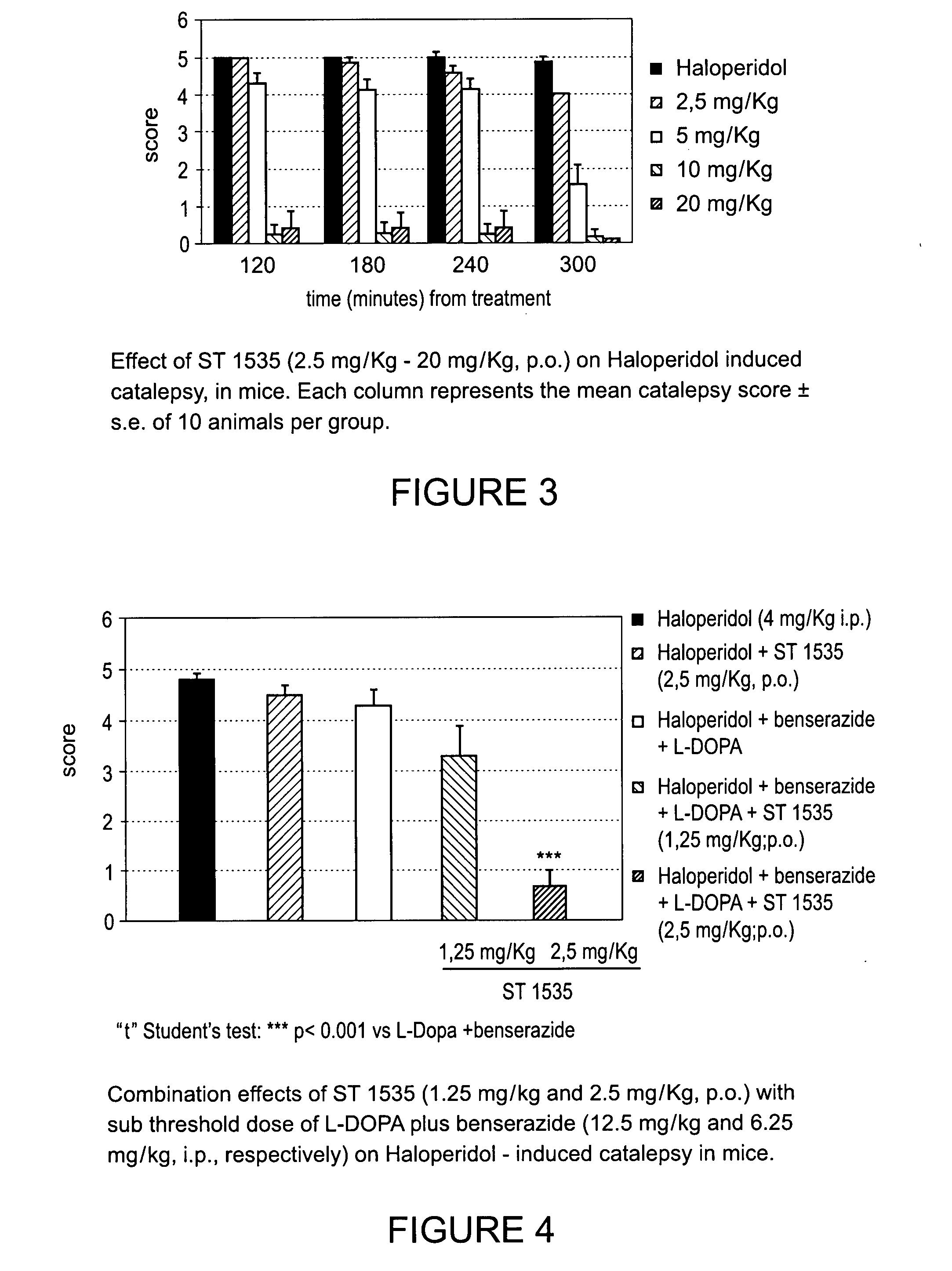Derivatives of triazoly-imidazopyridine and of the triazolypurines useful as ligands of the adenosine A2a receptor and their use as medicaments
a technology of adenosine a2a and triazolyimidazopyridine, which is applied in the direction of biocide, drug composition, cardiovascular disorder, etc., can solve the problems of cognitive impairment, lowering of the efficacy of the therapeutic approach, and the appearance of serious side effects
- Summary
- Abstract
- Description
- Claims
- Application Information
AI Technical Summary
Problems solved by technology
Method used
Image
Examples
example 1
(Scheme 1A)
2-chloro-6-dibenzylamino-9(H) purine (2)
[0046] To a solution of 1 g of 2,6-dichloropurine (1) (97%, 5.13 mmol), in 30 ml of absolute ethanol were added di-isopropylethylamine (1 ml, 5.13 mmol) and distilled dibenzylamine (1.1 ml, 5.13 mmol). The reaction mixture was left to reflux for 20 hours (after 1 hour a white precipitate is formed). The solvent was then removed at low pressure and the residue taken up in water.
[0047] Following cooling and filtration the solid residue (2), was dried under vacuum.
[0048] Yield: 95% Rf=0.25 (cyclohexane / ethyl acetate) 7:3 M.p.: 250-252° C. 1H-NMR (200 MHz, CDCl3): δ 7.89 (s,1H), 7.32 (s, 10H), 5.55 (bs, 2H), 5.49 (bs, 2H). MS (m / z): 91; 258-260 (BP, M-benzyl), 349-351 (<5%, M).
2-chloro-6-dibenzylamino-9-methyl-purine (3)
[0049] To a solution of (2) in hot DMF was added 828 mg of K2CO3 (6 mmol). The solution was then cooled and treated with 0.46 ml of CH3I (7.2 mmol) with agitation for about 12 hours. The DMF was evaporated, the pr...
example 2
(Scheme 2)
4-hydroxy-3-nitropyridine (8)
[0083] 16.7 ml of oleum (SO3 20% in H2SO4) was added slowly and dropwise to 20 ml of fuming nitric acid chilled to 0° C., and over a period of 15 minutes, 7 g of 4-hydroxypyridine were added. This was heated slowly until nitration began (red vapours developed). The reaction was then cooled until said vapours disappeared, then refluxed for 1 hour.
[0084] The reaction mixture was slowly cooled to room temperature and then poured over 50 g of ice. 60 ml of concentrated aqueous ammonia (30%) was added in small doses, taking care the temperature did not rise above 200° C. The pH was adjusted to 7.5 with more ammonia and then left at 4° C. overnight. The precipitate produced was filtered and crystallised in water to obtain 7.1 g of (8) as clear yellow crystals.
[0085] Yield=70%. M.p.: 275-277° C. MS (m / z): 94, 140.
4-chloro-3-nitropyridine (9)
[0086] In a reaction flask under nitrogen, were reacted at 70° C., 51.5 g of PCl5 and 75 ml of POCl3. At ...
PUM
| Property | Measurement | Unit |
|---|---|---|
| pH | aaaaa | aaaaa |
| temperature | aaaaa | aaaaa |
| temperature | aaaaa | aaaaa |
Abstract
Description
Claims
Application Information
 Login to View More
Login to View More - R&D
- Intellectual Property
- Life Sciences
- Materials
- Tech Scout
- Unparalleled Data Quality
- Higher Quality Content
- 60% Fewer Hallucinations
Browse by: Latest US Patents, China's latest patents, Technical Efficacy Thesaurus, Application Domain, Technology Topic, Popular Technical Reports.
© 2025 PatSnap. All rights reserved.Legal|Privacy policy|Modern Slavery Act Transparency Statement|Sitemap|About US| Contact US: help@patsnap.com



